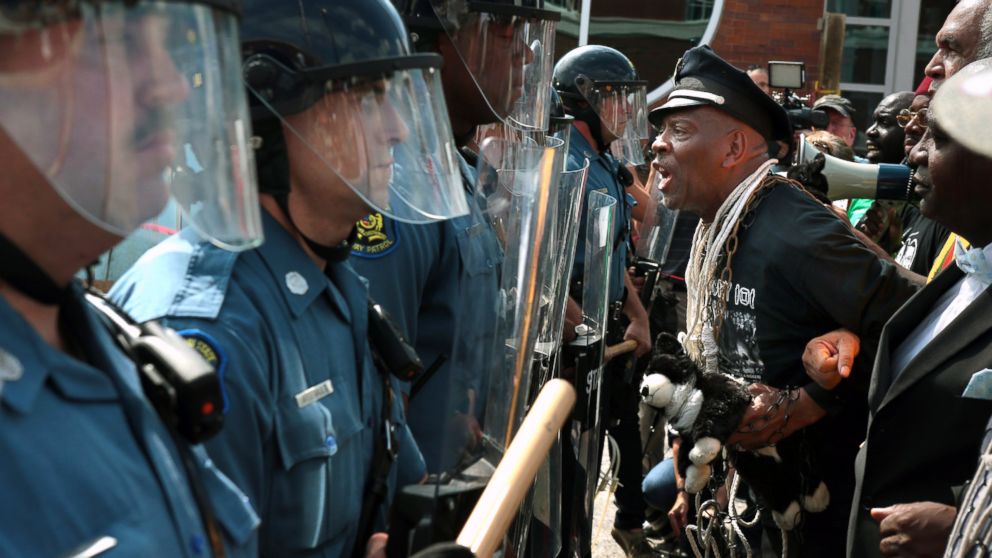Ferguson Police Department's Race Relations in Spotlight
The Ferguson PD has been criticized for its handling of Michael Brown's death.

— -- The Ferguson Police Department in Missouri has found itself in the national spotlight this week after one of its officers shot and killed unarmed black teenager Michael Brown in broad daylight Saturday.
Images of the police clashing with protesters have highlighted the racial tensions in the town. Many of the protesters are black, while the police force is nearly entirely white.
The police department has three black officers and 47 white officers, or about 6 percent black officers, according to the Ferguson police chief. The city of Ferguson, meanwhile, is about 68 percent African American, according to U.S. Census data.
Brown, 18, was shot multiple times by the unidentified officer, police said. His body lay slain on the sidewalk for hours as first Ferguson police and then the St. Louis County Police Department processed the scene, drawing immediate criticism aimed at the police for not removing his body more quickly.
Though the St. Louis County PD has taken over the investigation into the shooting, Ferguson police have been on the forefront of clashes with protesters in the days since Brown's death. They have been criticized by Brown's family, as well as the Rev. Al Sharpton and NAACP leaders, for not naming the shooting officer and for their heavily-armed response to protesters.
On Sunday night, violence erupted in Ferguson after the protests, as some individuals vandalized and looted stores, set fires and vandalized patrol cars. Protests resumed Monday night and Tuesday night without looting, but Ferguson police continued to fire rubber bullets and tear gas into crowds of demonstrators as they instructed everyone to go back to their homes.
One of the demands of protesters this weekend, printed on a flier handed out to crowds, was for a police force that more accurately represents the racial makeup of the community.
Protesters said that blacks have long been targeted by police.
"We have to stick together because we are targets," Robert Bredfford, an African-American 26-year-old, told the St. Louis Post-Dispatch at the protests on Sunday.
"There’s a lot of talk about mentoring. I’m going to be working with the U.S. Justice Department community relations people to improve relations between the community particularly the young black males," Ferguson Police Chief Tom Jackson told ABC News following the unrest.
Statistics from the state attorney general back up that claim, showing that in 2013, police pulled over black drivers 4,632 times and white drivers 686 times. Even after accounting for the difference in the number of black residents and white residents living in the city, blacks are pulled over at a 37 percent higher rate.
The data also show that blacks were twice as likely to be searched and arrested and African Americans in Missouri were 66 percent more likely to be stopped by police in 2013, according to the St. Louis Post-Dispatch.
But those numbers have to be taken in the context of the region, according to criminal justice expert David Klinger, associate professor of criminology and criminal justice at the University of Missouri at St. Louis.
"This area is surrounded by areas with a higher concentration of black population than the city, so when we do an analysis we need to look at that whole area. It's entirely possible that what is going on here is that it's not just residents [being pulled over]," Klinger said.
"The real issue is not who gets stopped, unless there is evidence showing that they are stopping black people in a disproportionate number, but how are the stops being conducted?" Klinger said.




